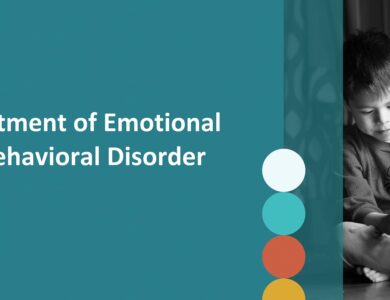
Disclaimer: The emotional and spiritual healing techniques described herein are not a substitute for mental health treatment from licensed professionals. Please consult your doctor and appropriate therapists if you have any concerns about your emotional well-being. The author provides general information about traditional and holistic modalities but cannot guarantee effectiveness for every individual. Seek help right away if you have any thoughts of harming yourself or others.
Life can be stressful and full of challenges that take a toll on our emotional and spiritual well-being. When we experience emotional wounds or trauma, it can negatively impact our mental health and cause pain that feels hard to heal from. However, many holistic healing techniques can help facilitate emotional and spiritual healing to find inner peace once more.
What is Emotional Healing?
Emotional healing is the process of releasing painful or negative emotions built up over time so that we can regain balance and peace within ourselves. It allows us to let go of past hurts, work through challenging issues, and come to a place of acceptance and closure. Common emotions that often require healing work include grief, anger, sadness, fear, shame, and regret.
Releasing these emotions enables personal growth and opens our hearts to give and receive love once more. It allows us to make peace with past events and not let them dominate our present and future happiness.
What is Spiritual Healing?
Spiritual healing involves connecting to the deepest part of ourselves – our soul essence and true nature – which exists beyond our temporary emotions, ego, and human identity. It aligns us with our spiritual purpose, intuitive wisdom, and profound sense of peace, love, joy, and inner freedom at our core.
Spiritual healing allows us to tap into the sacred place within all of us that feels connected to all of life and the divine. It enables us to access our highest potential and understand that we are all one despite surface differences.
Benefits of Emotional and Spiritual Healing
- Improved mental health and well-being
- Relief from depression, anxiety, and emotional pain
- Develop self-love, self-confidence, and self-worth
- Find meaning, purpose, and direction in life
- Build healthier relationships
- Reduce stress levels, anger and resentment
- Come to peace with grief and loss
- Greater awareness and intuition
- Feel more connected to self, others, and nature
- Experience inner calm, balance, and contentment
Techniques for Emotional and Spiritual Healing
Many techniques and modalities can powerfully facilitate emotional and spiritual healing. Different approaches work for each person, so have an open mind to find what resonates most. Key techniques include:
1. Meditation and Breathwork
Meditation enables us to go inward to become centered and access our deepest truths. Taking long, deep breaths while meditating calms the nervous system, allowing emotions and trauma stored in the body to be safely released. This quiets the chatter of the mind and connects us to inner stillness.
2. Journaling and Art Therapy
Writing down feelings, thoughts, and revelations allows us to freely express and work through emotional blocks. Creating art – whether visual art, dance, music, or other modalities – enables a powerful release through the creative expression of our soul.
3. Spending Time in Nature
The natural world holds profound healing energy that can relax and rejuvenate us. The vibration of trees, rivers, mountains, and wildlife grounds and renews us to access inner peace. Time away from the chaos of daily life reconnects us to what matters.
4. Forgiveness and Letting Go
Holding onto resentment keeps us energetically tied to the past which creates suffering. True forgiveness means releasing others so we can be free while releasing ourselves from guilt over perceived shortcomings. This act of letting go cleanses old emotional wounds.
5. Therapy and Support Groups
Working with a therapist, healing practitioner, or support group builds self-awareness and can help us safely explore emotional issues we keep inside. Shared connection, insight, and accountability can propel the inner work.
6. Performing Rituals and Ceremonies
Rituals hold transformational power to affirm intentions, honor transitions, and symbolic deaths and rebirths. Whether private personal rituals or traditional ceremonies, they enable us to mindfully acknowledge growth.
7. Getting Bodywork and Energy Healing
Releasing trauma stored in the body’s cellular memory helps clear emotional blocks and heaviness from the past. Massage, acupuncture, reiki, and other modalities align the body with the spirit.
8. Chanting, Prayer and Mantras
Bringing sacred sounds or repetition of uplifting words ritualizes our focus to move stuck energy. Heart-centered prayer or repeating mantras elevates consciousness to access higher wisdom leading to breakthroughs.
Creating an Emotional and Spiritual Healing Practice
While the above techniques provide immense value, creating an ongoing emotional and spiritual healing practice that weaves some of these modalities together over time is what enables lasting transformation to unfold. An intentional practice calms distress centers our minds and infuses life with more peace and purpose.
Aim to connect with your practice daily even start with 5 or 10 minutes to develop the habit. Recording reflections in a journal is also beneficial for self-inquiry. While emotional healing is challenging work, know that the other side holds deep fulfillment waiting to be discovered. Patience with ourselves and the process is key.
Finding an Emotional and Spiritual Community
While we all have an inner healer within, one of the most powerful ways to accelerate healing is being together in community with others seeking the same. Attending workshops, gatherings, women’s circles, men’s groups, meditation sittings, and holistic conferences allows us to share resources, gain wisdom, and find belonging with like-minded souls. This strengthens our commitment and lifts us higher through the unified field created.
Embrace Emotional Healing as a Journey
Understand that cultivating emotional well-being and spiritual growth is not a quick fix, but an ongoing journey over time. Release the idea that any one technique, retreat, or peak experience will make you healed. Expect ups and downs, progress and setbacks, and keep exploring. With compassion for the process, we must grow through periods of emotional intensity to find equilibrium again.
Be Gentle with Your Progress
Infuse kindness towards yourself as part of your healing practice. Our human experience holds suffering, yet we are worthy anyway. The most potent message felt from self-love and acceptance is: “I am enough”. This lessens the inner critic, anxiety of not being perfect, and the need to measure up. Each moment we choose peace, we plant seeds of profound change to come.
Healing Occurs One Layer at a Time
Like peeling the layers of an onion, expect that surfacing issues that require healing attention will keep arising. As we strengthen through doing the work on one layer, we uncover the next level ready to be seen with more clarity. Old childhood pain may resurface again, yet we are better equipped to process it from a new level of awareness as part of the spiral journey.
Focus on Progress Over Perfection
Stay focused on progress in your healing rather than demanding perfection right away. Getting emotionally and spiritually healthier occurs incrementally through a gradual accumulation of insights over time. Expect setbacks and don’t judge yourself when they happen. Each step forward counts as part of the greater trajectory toward inner peace.
Find Healthy Support to Ventilate Feelings
Bottling up feelings won’t make them disappear. Instead, they often leak out in destructive ways. Having safe spaces and people where we can share what we think and feel without judgment allows us to get things off our chest. This ventilation of releasing inner pressure is therapeutic and often brings helpful feedback.
Frequently Asked Questions
What are the indicators that someone needs emotional healing?
Signs someone may need emotional healing work include experiencing unresolved grief, extreme anger, high anxiety, repeating negative patterns in relationships, underlying sense of low self-worth, inability to move forward after loss or trauma, and relying on unhealthy coping mechanisms to deal with life’s challenges.
How can someone start their emotional healing journey?
Beginning an emotional healing journey starts with acknowledging your pain as valid, seeking support through journaling, talking to trusted confidants, researching healing modalities and practitioners that resonate, and making commitments to try those methodologies consistently over time through an intentional practice. Small actions add up.
How long does emotional healing take?
There is no set timeline for emotional healing because our experiences are diverse, as is the extent of our unique issues and trauma. Expect this work to unfold in layers over the years. The most progress occurs through regular, ongoing spiritual and emotional health practices that promote insights over time versus quick fixes. Be patient and gentle with yourself along the way.
How do you know when emotional healing is complete?
Emotional healing is rarely “complete”, rather it is seen as a lifelong journey of growth. We periodically uncover another layer ready for our attention so the process deepens. However, clearer indicators you have processed an issue include feeling at peace when you think of specific past hurts, freedom to feel whole on your own, letting go of blame while taking self-responsibility, feeling empowered by lessons gained, and increased compassion for others and yourself.
How is spiritual healing different from emotional healing?
Emotional healing focuses on clearing wounds, trauma, and cyclic patterns involving difficult feelings from our past so we can be freer in the present. Spiritual healing connects to the eternal aspect of who we are – beyond temporary emotions or human identity – to access wisdom, grace, boundless love, and inner freedom existing within us. The two fuel and complement each other.
Conclusion
Our emotional and spiritual health is just as important as our physical wellness, if not more so. Yet it often requires intention and work to keep our inner landscape clear. Utilizing holistic healing techniques empowers us to release old emotional pain, raise our vibration, and access inner peace. This enables us to live life with more wisdom, purpose, joy, and a conscious connection to ourselves and others. Integrating such practices over time allows profound healing and positive transformations to unfold from within.
Mustafa Al Mahmud is a passionate medical writer and health enthusiast. He is excited to share his knowledge and make reliable health information more accessible through Quick Medico. Mustafa aims to write about common diseases, medications, wellness topics, and the latest health research in easy-to-understand language. He believes clear and accurate health communication empowers readers to take charge of their well-being. In his free time, Mustafa enjoys hiking, cooking, and spending time with his family.



